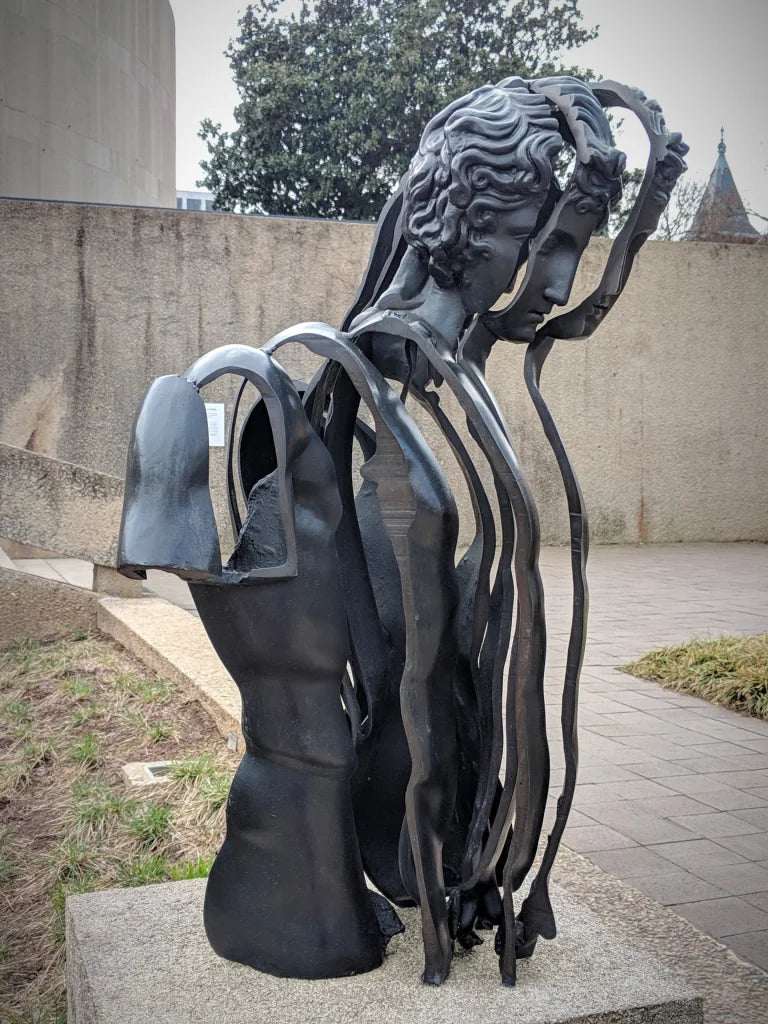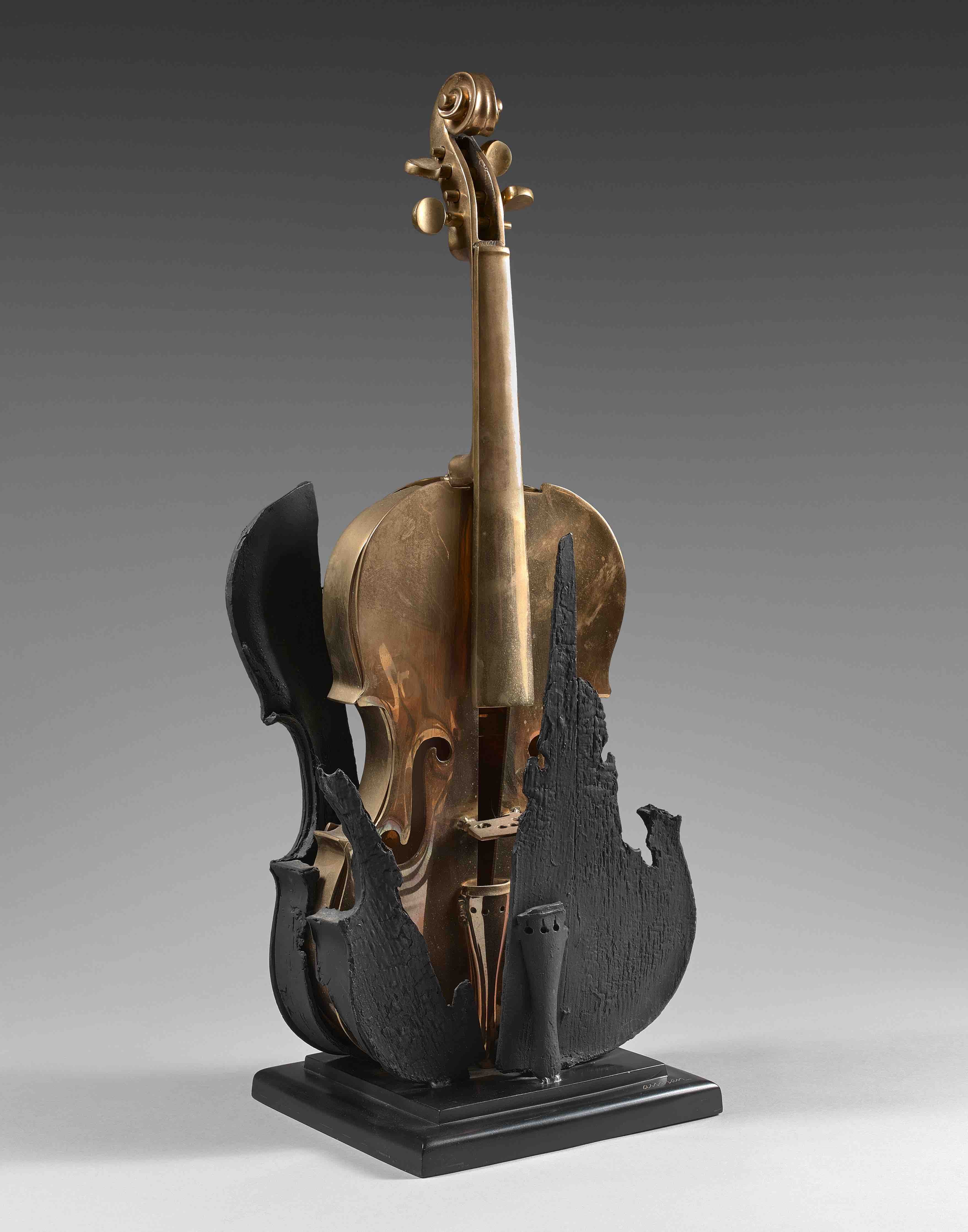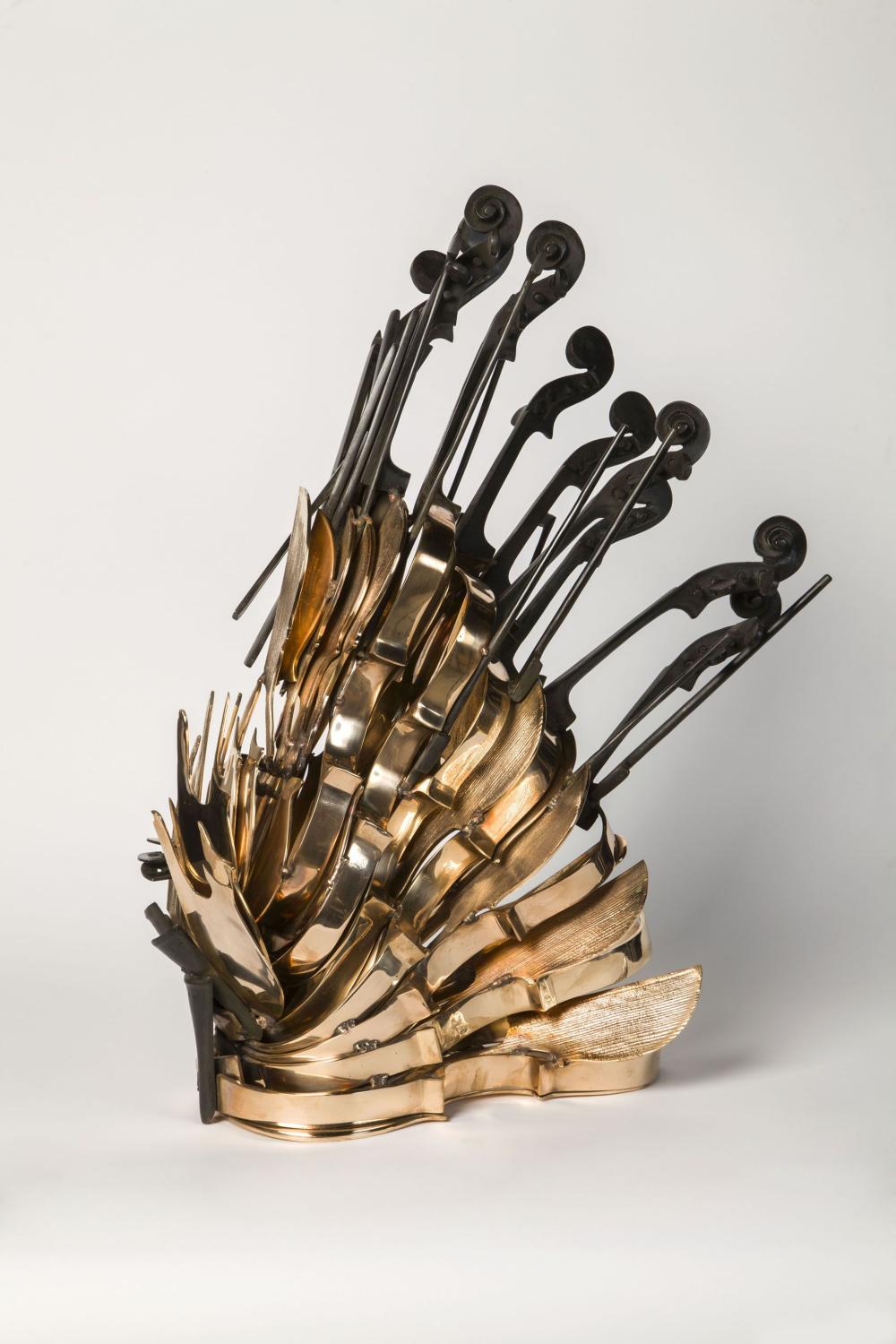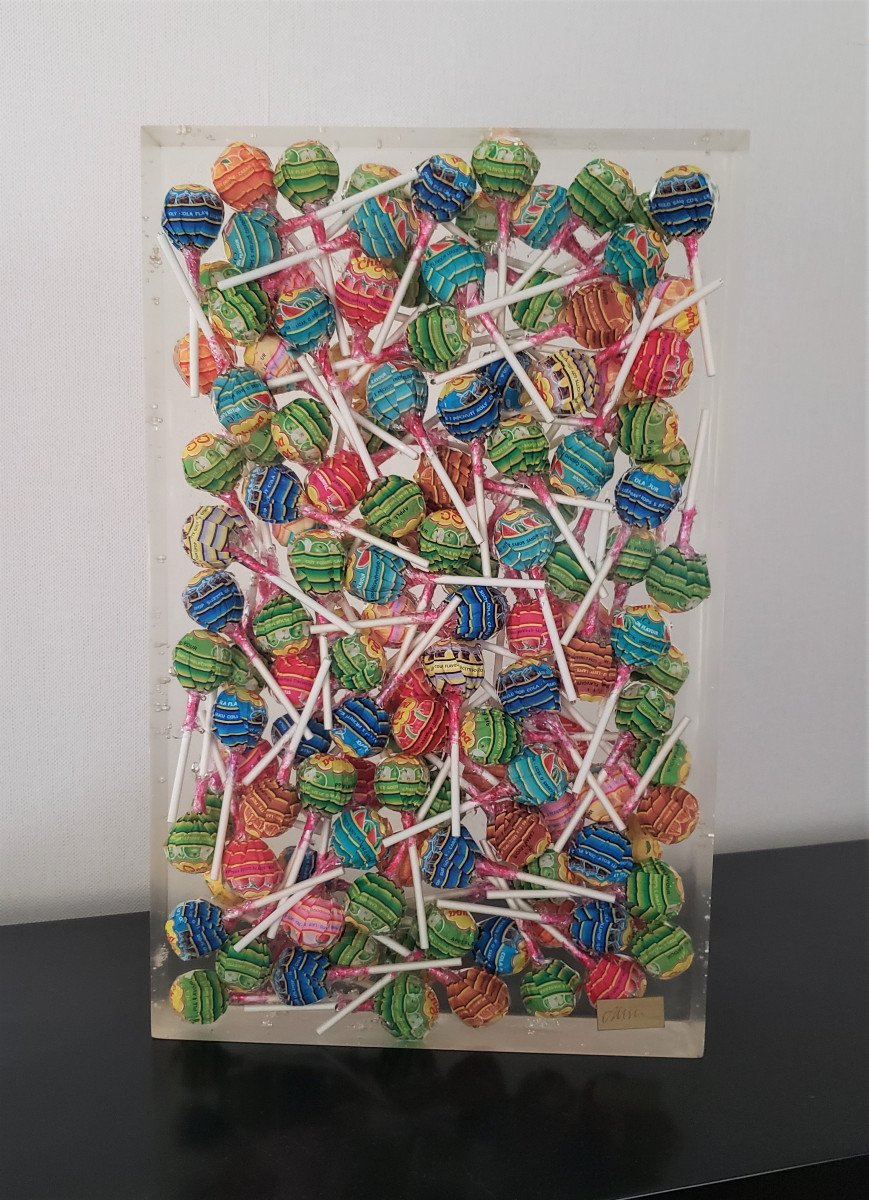
Armand Pierre Fernandez, known worldwide as Arman, transcended the conventional boundaries of art throughout his prolific career. Born in Nice, France, in 1928, Arman emerged as an icon of the Nouveau Réalisme movement, defying artistic expectations with her innovative and daring creations. His unique approach, which evolved from abstract painting to transforming everyday objects into artistic expressions, reveals an intrepid artist, deeply involved in the deconstruction and recomposition of material reality. In every creation, Arman invites us to reconsider the relationship between the ordinary and the exceptional, shedding light on the intricate intersection between art, society and our perception of the world around us. This article explores the fascinating journey of Arman, from his early formative years in Nice to his immersion in the Parisian artistic avant-gardes and, finally, his transition to the effervescent art scene in New York. As we examine his most notable works, we will delve into the distinctive features that make his legacy Arman so impactful and influential. From his iconic "Accumulations" to his fusion of music and sculpture, Arman shaped an artistic universe where the ordinary transforms into the extraordinary.

What was the route of Arman?
Armand Pierre Fernandez, known artistically as Arman, was a French-American artist born in Nice, France, on November 17, 1928, and died on October 22, 2005, in New York. His artistic career was marked by a significant evolution in terms of style and techniques throughout his life.
His father, Antonio Fernandez, was an antiques dealer and also an amateur artist, photographer and cellist. Since early, Arman He learned oil painting and photography from his father. After completing his studies in philosophy and mathematics in 1946, he entered the École Nationale des Arts Décoratifs in Nice, where he studied judo and met Yves Klein and Claude Pascal, with whom he developed a strong friendship.
After completing his studies in 1949, Arman went to Paris and enrolled at the École du Louvre, concentrating on archeology and Asian art. In 1951, he became a teacher at the Bushido Kai Judo Club in Madrid, Spain, and in 1952, he served in the French army during the Indochina War. During this period, his artistic approach began to focus on the accumulation of similar objects.
Inspired by an exhibition by German Dadaist Kurt Schwitters in 1954, Arman began working on his first significant accumulations, called "Cachets". In 1958, in his third solo exhibition at Galerie Iris Clert in Paris, he exhibited his first two-dimensional accumulations called Cachets, marking an important change in his career. During this period, he also decided to change his name from "Armand" to "Arman", in honor of Van Gogh.
From 1959 to 1962, Arman developed his most recognizable style, focusing on two main ideas: Accumulations and Poubelles (garbage cans). Accumulations were collections of common and similar objects, often organized in transparent resin or acrylic boxes. The Poubelles were representations of scattered rubbish. He also explored creation through destruction, with works such as Coupes (Cortes) and Colères (Iras), which featured cut, burned, or destroyed objects.
Arman had a connection with the artist Andy Warhol, being seen in Warhol's film "Dinner at Daley's" in 1964. Warhol owned two of the Poubelles of Arman and another accumulation called Amphetamines.
Fascinated by the art scene in New York, Arman began spending part of his time in the city from 1961 onwards. He became involved with the ZERO art movement based in Germany. During this period, his Accumulations included a variety of objects, from tools to musical instruments.
One of his largest works, "Long Term Parking" (1982), consists of 60 French cars embedded in 18,000 kg of concrete and is on permanent display at the Château de Montcel in Jouy-en-Josas, France. Another notable work is "Hope for Peace" (1995), a special commission by the Lebanese government, which consists of 83 tanks and military vehicles in Beirut.
He passed away in New York in 2005, and part of his ashes were buried at the Père Lachaise Cemetery in Paris in 2008.
Arman is recognized as one of the most prolific and inventive artists of the late 20th century, with works in important collections and museums around the world, including the Metropolitan Museum of Art in New York, the Tate Gallery in London and the Center Pompidou in Paris. His work influenced artistic movements such as Nouveau Réalisme and left a lasting mark on the international art scene.

What are the characteristics of works by Arman?
Accumulations and Poubelles: Arman He is best known for his "Accumulations" - works that involve the gathering and organization of large quantities of similar objects. He also worked on "Poubelles" (trash cans), creating artistic compositions with discarded objects and trash.
Destruction and Recomposition: Over a period, Arman explored the idea of creating art through destruction. His series of works "Coupes" (Cuts) and "Colères" (Iras) involve cut, burned or destroyed objects.
Use of Everyday Objects: Arman He was known for using everyday objects, such as watches, musical instruments, automobiles, furniture and even personal objects, in his works.
Materiality and Transparency: In your Accumulations, Arman He often embedded objects in transparent resin or acrylic cases, allowing viewers to see the three-dimensional arrangement of items.
Dadaist Influence: Arman was influenced by Dadaism, an artistic movement that challenged traditional artistic conventions and often incorporated elements of the absurd and irrational.
Name Change and Tribute to Van Gogh: Changing his name from "Armand" to "Arman" in 1957 was a significant choice, made as a tribute to Vincent Van Gogh, who also signed his works with just his first name.
Involvement with Nouveau Réalisme: Arman was one of the founding members of the Nouveau Réalisme group in 1960. This group of artists sought a new approach to reality, often incorporating elements of everyday life into their works.
Interest in Music and Instruments: Musical instruments, especially strings and brass, became prominent themes in works by Arman. His collaboration with a foundry in Normandy, France, contributed to this.
Exploration of Materials and Means: Throughout his career, Arman He experimented with a variety of materials and mediums, from found objects to welding techniques, to create his works.
Critical Themes for the Consumer Society: In his series of Poubelles, Arman addressed critical themes related to consumption, waste and mass production, anticipating critiques of consumerism that would become important features of the Pop Art movement.

What are the most famous works of Arman?
"Le Plein" (1960): This work was exhibited at Galerie Iris Clert, in Paris. In contrast to his friend Yves Klein's previous exhibition called "Le Vide" (The Void), Arman filled the gallery with trash, exploring the idea of accumulation.
"Long Term Parking" (1982): One of his largest and most impressive sculptures, located at the Château de Montcel in Jouy-en-Josas, France. This work consists of 60 French cars immersed in 18,000 kg of concrete.
"Hope for Peace" (1995): A monumental sculpture commissioned by the Lebanese government to commemorate 50 years of military service. Located in Beirut, Lebanon, the project consists of 83 tanks and military vehicles.
"Violins Accumulation" (1969): Part of his Accumulations series, this work incorporates violins disassembled and arranged in a unique way. Reflects the fusion of music and art in the production of Arman.
"Portrait of Marguerite" (1962): A notable work from the Coupes series, which involves cut and arranged objects in a visually striking composition.
"Amphetamines" (1966): A work that is part of the accumulations of Arman, demonstrating your ability to organize objects in an attractive and conceptual way. This work was owned by Andy Warhol.
"Homage to Van Gogh" (1962): A series of works that reflect the influence of Van Gogh in the life of Arman. Pay homage to the painter by signing his works with just his first name, similar to how Van Gogh signed his paintings.
"Eros, Inside Eros" (1986): A sculpture located in the Hirshhorn Museum and Sculpture Garden that exemplifies the skill of Arman in creating imposing and visually captivating works.

Arman, throughout his extraordinary artistic career, not only challenged established conventions, but also redefined the limits of what art could be. His boldness in accumulating, destroying and recomposing everyday objects brought to light a new perspective on the relationship between the artist and his raw material. In this closing, we contemplate not only his imposing sculptures, but the ability to Arman of elevating the trivial to the sphere of the sublime.
By exploring his emblematic works, from early experiments with stamps to grand installations of cars and tanks, we witness an artist who dared to defy expectations. Arman transformed banality into beauty, questioned consumerism with his Poubelles and, in the process, embraced chaos as a means to create. In every cut, every weld, we find the essence of a creator who saw in accumulation not just a technique, but a philosophy of expression.
By leaving his mark on the currents of Nouveau Réalisme and in collaborations with other icons of the artistic scene, Arman transcended his time, leaving a legacy that echoes through the decades. Its name change, a tribute to Van Gogh and tireless exploration of materials are testaments to a restless creative mind, constantly searching for new ways to manifest its visions.
His works continue to challenge traditional definitions of art, reminding us that true innovation lies in the ability to transform the ordinary into something extraordinary. Like this, Arman is not just a name in the history of art, but an inexhaustible source of inspiration for those who seek to see beyond the ordinary and explore the unlimited potential of human creativity.

